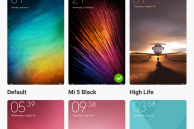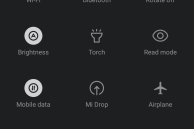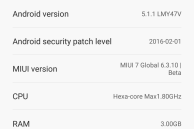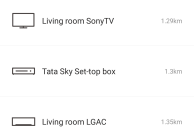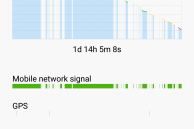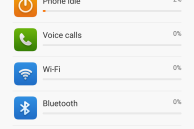The second half of 2015 was a relatively low key for Xiaomi in India. While other Chinese OEMs launched handsets across various price range to capitalise on the festive season, Xiaomi sat in the sideline, and it was only towards the end of the year that it released a relatively unremarkable Redmi Note Prime.
This year though, things are different. Not only has the Chinese company launched its much anticipated flagship — the Mi 5 — in China, it is also set to rule the mid-range smartphone market in India with the release of the Redmi Note 3.
Called the Redmi Note 3 ‘PRO’ by Xiaomi fans in India, the handset will compete with other smartphones priced inside the Rs. 10,000-15,000 price range in the Indian market. So, how good is Xiaomi’s latest offering? Find out in our review below.
Design

Chinese OEMs have raced to provide a metal unibody build in their handsets, but they usually put little thought in the design and ergonomics of the phone. While there are always a few exceptions, almost every other Chinese OEM offers a metal clad smartphone in the sub-15k price segment in India. So, it is refreshing to see Xiaomi put some thought into the ergonomics of the Redmi Note 3. The handset does not particularly stand out in terms of its design — though I do find its metallic body to be a looker in the Rose Gold color; it is the ergonomics that has won me over.
The curved edges on the Redmi Note 3 seamlessly meet the glass in the front that gives it a very ergonomic friendly design. The curved edges make it a lot easier to hold the device. The 5.5-inch display on the Redmi Note 3 puts it well into the phablet category, but the curved edges help in making the phone usable one-handed for most tasks.
Xiaomi’s attention to detail on the Redmi Note 3 can also be seen from the fact that the camera module, two-tone LED flash and the fingerprint scanner at the rear of the handset sit in a perfectly straight line. While this is not something that many consumers will notice, it does show the extent to which the company has gone in engineering and designing the handset. I do, however, find the microUSB port located at the bottom left side of the phone a slight design oddity.
If there is one issue that I have with the design of the Redmi Note 3, it has to be its rear facing speaker. After being spoilt by the front-facing speakers on the Lenovo Vibe K4 Note and the Nexus 6P, the rear facing speaker on the Redmi is a huge disappointment. Xiaomi has put a small pivot just below the speaker to make sure that the sound does not get muffled while kept on a table, but I still missed notifications when I kept the phone on a soft surface like a bed or sofa.

The touch based fingerprint scanner on the Redmi Note 3 is accurate and almost as fast as the Nexus Imprint scanner found on the Nexus 6P and Nexus 5X. Since the handset runs on Marshmallow, the fingerprint scanner cannot be used by third-party apps, but Xiaomi has partnered with LastPass to ensure the app is able to use the fingerprint scanner for authentication purposes. It is also possible to use the fingerprint scanner for taking photos and opening locked apps.
Display
The Redmi Note 3 features a 5.5-inch Full HD display, which is becoming a commonplace in smartphones of this range. At full brightness, the IPS display on the handset is almost blindingly bright. That’s not all though; the display can also reach really low brightness levels that make it perfect for reading in a dark room. Xiaomi has also included a ‘Read’ mode that automatically tweaks the display’s color balance and temperature to optimise it for reading.
Other aspects of the display like its viewing angles, touch sensitivity and sunlight eligibility are also top-notch. The display can get a bit reflective sometimes, but its not too troublesome. The 5.5-inch display on the Redmi Note 3 is as good as IPS displays can get, with the added brightness and built-in Read mode acting like a cherry on the top.

The beautiful display is not protected by Corning’s Gorilla Glass, but it does feature a strengthened glass. While I cannot comment on the actual strength and quality of the glass, it does seem to hold up almost as well as Corning’s Gorilla Glass. It also comes with an oleophobic coating to repel fingerprints.
Just below the 5.5-inch display sits the capacitive navigation keys, which are in reverse order. So, you have the Recent Apps button on the left, the home button in the middle, and the Back button on the right. The buttons are backlight (thankfully white), so you are not going to struggle to find and press them in dimly lit conditions.
Software
Out of the box, the Redmi Note 3 runs on Android 5.1.1 Lollipop, but thanks to Xiaomi’s MIUI skin and the modifications it brings, the version of Android the handset runs on hardly matters. MIUI 7.1 is the perfect blend of beauty with brains, at least on the Redmi Note 3. Not only is the UI pretty to look at, it also comes with a plethora of customisation options.
Some of these nifty little features that I really like include, for example, Smart OTP that automatically recognises any OTP that you receive over SMS and pops a copy button beside it, so that you can quickly paste it in the requested window. I also like the ability to lock apps and then only being to open them using my fingerprint or being able to customise the system look and feel using MIUI themes.
I am a stock Android lover though, and while I appreciate the little changes that MIUI introduces, I also loathe some of them. For example, the only way to expand a notification in MIUI 7 is using a two-finger swipe down gesture, which I was not even aware of until late last week. Notifications are always collapsed by default and since the one-finger gesture to expand notification does not work on MIUI, I actually thought that Xiaomi had removed this feature from their skin altogether — until I was informed otherwise.
Now, despite MIUI 7.1 on Redmi Note 3 already offering some of the features found in Marshmallow, I cannot help but feel that Xiaomi should have launched the handset with Android 6.0 onboard. With MIUI on top, the improvements in Marshmallow would have been barely noticeable, but at least features like Now on Tap and Doze would have been present on the phone.
Impressively, Xiaomi has ensured that the Redmi Note 3 is running an almost up-to-date security patch from Google. The handset is running the February security patch, while Google released the March security patch only late last week.
Performance
The highlight of the Redmi Note 3 has to be its heart: the Snapdragon 650 chipset from Qualcomm. This hexa-core chip from Qualcomm features four Cortex-A53 cores clocked at 1.4GHz and two ‘big’ Cortex-A72 cores clocked at 1.8GHz, along with an Adreno 510 GPU. Despite packing fewer number of cores than other devices in this range, the Redmi Note 3 easily beats them in day-to-day performance, and absolutely annihilates them in benchmarks. In AnTuTu, the Redmi Note 3 scores around 78,000 points, while the Lenovo Vibe K4 Note and Honor 5X score around 35,000 and 37,000 points, respectively.

During my testing period of nearly 2 weeks, the Redmi Note 3 never skipped a frame or stuttered even once, and breezed through heavy games like Asphalt 8 and Modern Combat at full settings. I wish I could say the same thing for other mid-range devices like the Honor 5X and the Vibe K4 Note. The latter’s performance even while navigating through its UI is miserable, while the Vibe K4 Note’s lowly MediaTek chipset struggles to play games like Asphalt 8 medium settings.
To make things better, the Redmi Note 3 does not heat up while under heavy load. Yes, the phone does get warm when pushed hard, but nothing that you will ever need to worry about.
The performance of the Redmi Note 3 far exceeded my expectations. In terms of pure performance alone, the handset easily challenges the likes of OnePlus 2 and the Moto X Style — handsets which are almost double its price. Based solely on its performance, the Redmi Note 3 makes high-end flagships feel grossly overpriced.
Camera

The Redmi Note 3 comes with a 16MP shooter at the rear with Phase Detection Autofocus (PDAF) and a two-tone LED flash. There is also a 5MP camera on the front of the device for all your selfie needs.
The rear camera of the Redmi Note 3 is probably the only chink in its armor. While PDAF ensures speedy autofocus times, the resulting images are not exactly great. In typical Xiaomi style, the contrast and saturation levels of the final are tweaked to make them look more pleasing to the eye, which is fine by me. The lack of details and noise surrounding a subject, however, are deal breaker for me. In daylight, the Redmi Note 3 still manages to click respectable photos, but in less than perfect lighting, the camera really struggles. The resulting low-light images have a lot of noise, which is visible even without doing any kind of pixel peeping.
The front 5MP selfie shooter will easily satiate all your selfie needs and the built-in beautify mode will ensure that you look young in all of them.
The Redmi Note 3 is also capable of recording videos in Full HD resolution that are strictly okay in quality. The handset can also record videos in slow-mo at 720p resolution, which lack detail, and it is wise to not use this mode in less than ideal lighting. Surprisingly, despite coming with a powerful Snapdragon 650 chipset, you cannot record 4K videos on the Redmi Note 3 out of the box. This seems more like a feature that Xiaomi could not add to the handset due to time constraints, since one can record videos on the handset in 4K resolution using the Google Camera app.
Battery Life
The Redmi Note 3 features a non-removable 4050mAh battery, which is among the largest in its segment. Combined with the new efficient Snapdragon 650 chipset, the Redmi Note 3 is an absolute workhorse that can easily last you nearly two days on a single charge. On days with significantly heavy usage, the handset can easily last a day and then some. Over the last few years, I have used very few phones that could impress me with their absolutely breathtaking battery life (Xperia Z2/Z3, OnePlus One), and the Redmi Note 3 is one of them.
Once you charge the handset to 100 percent, there is absolutely no need for you to worry about it running out of charge anytime soon. Having the sense of freedom of knowing that your phone can easily make it the next 24 hours even if you have only around 40-45% battery left is a revelation in itself. If anything, the battery life of the Redmi Note 3 will make me think twice before I switch to another phone eventually.
I consistently managed to get more than 6 hours of screen-on time from the phone over a period of 30 hours on Vodafone’s budding 4G LTE network. My usage usually consisted of lots of browsing, emails, WhatsApp, almost 2 hours of voice calls, clicking a 5-6 photos, and listening to music for nearly an hour.
Conclusion
The Redmi Note 3 is a game changer for its price point. Barring its sub-par camera performance in low-light, the handset passes with flying colors in every other department: display, performance, and battery life. On the performance front especially, the Redmi Note 3 is a true ‘flagship killer.’ I really don’t see any difference between its performance and that of a high-end flagship device like the LG G4 or the Samsung Galaxy S6. And unlike the latter, the Redmi Note 3 does not even suffer from any poor RAM management issues.
The Redmi Note 3 trumps its chief competitors — the Honor 5X and the Lenovo Vibe K4 Note — in almost every department. The sub-par camera and the rear speaker might be its Achilles heel, but that really should not stop you from buying a handset that has set the benchmark for other sub-15k mid-range handsets to follow this year.

